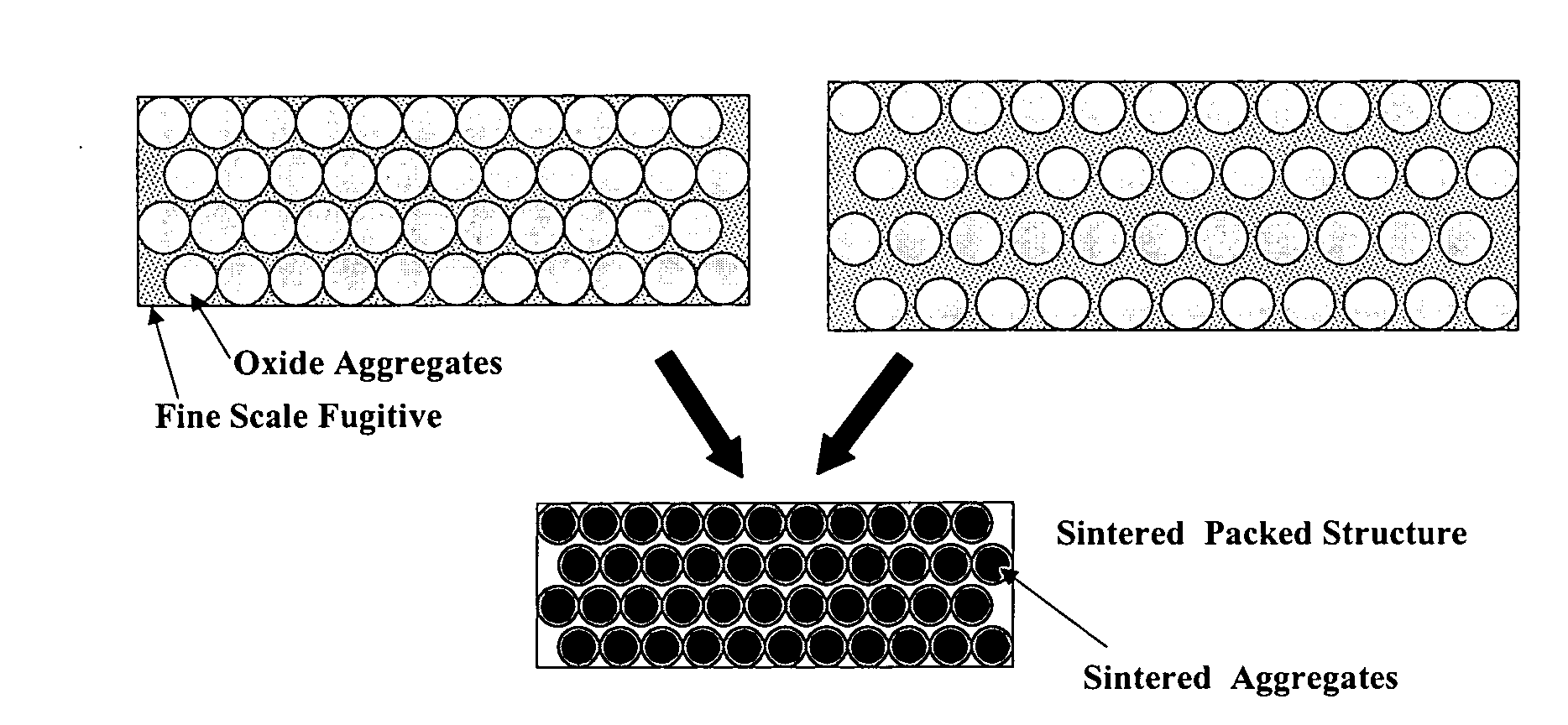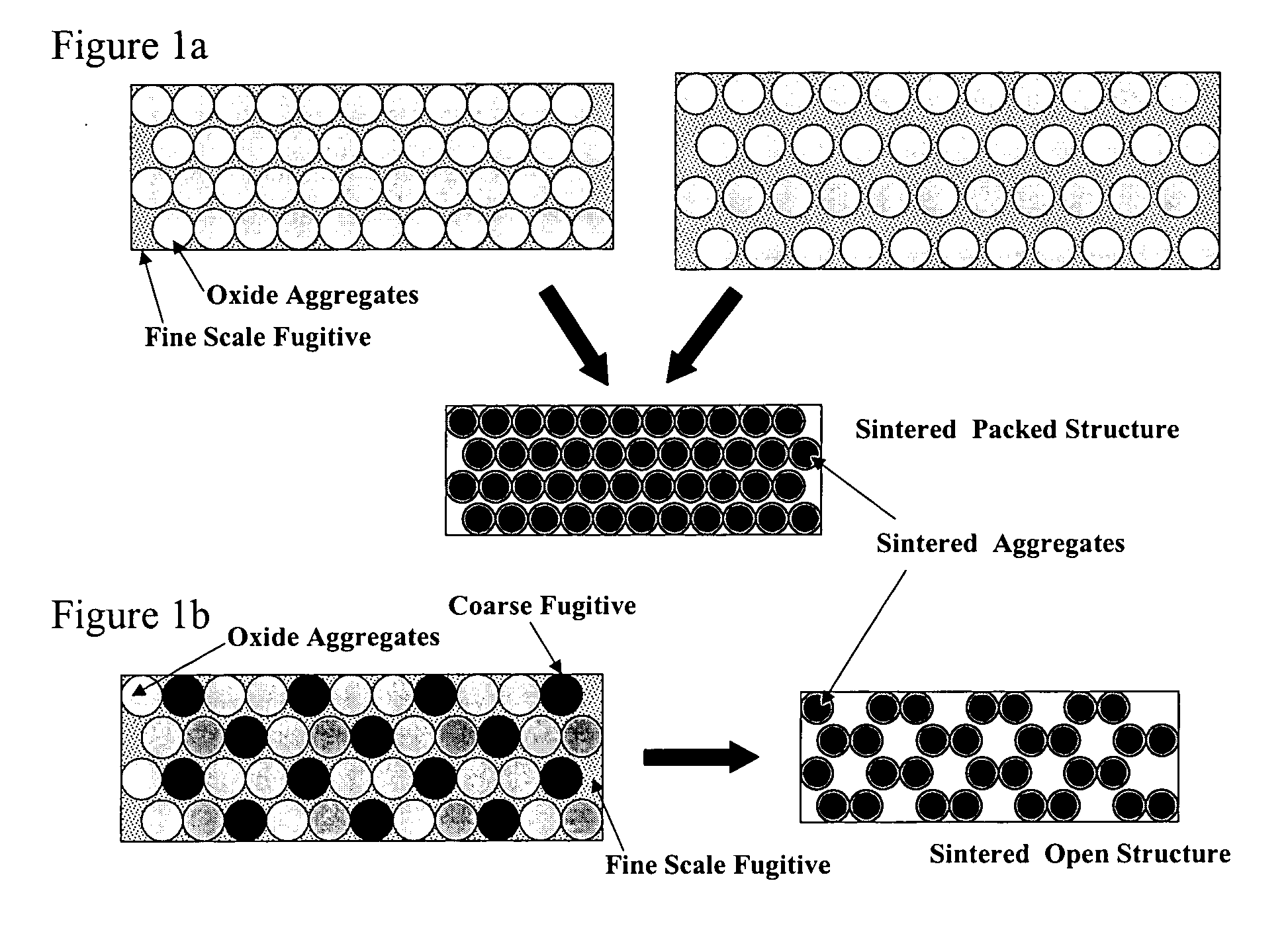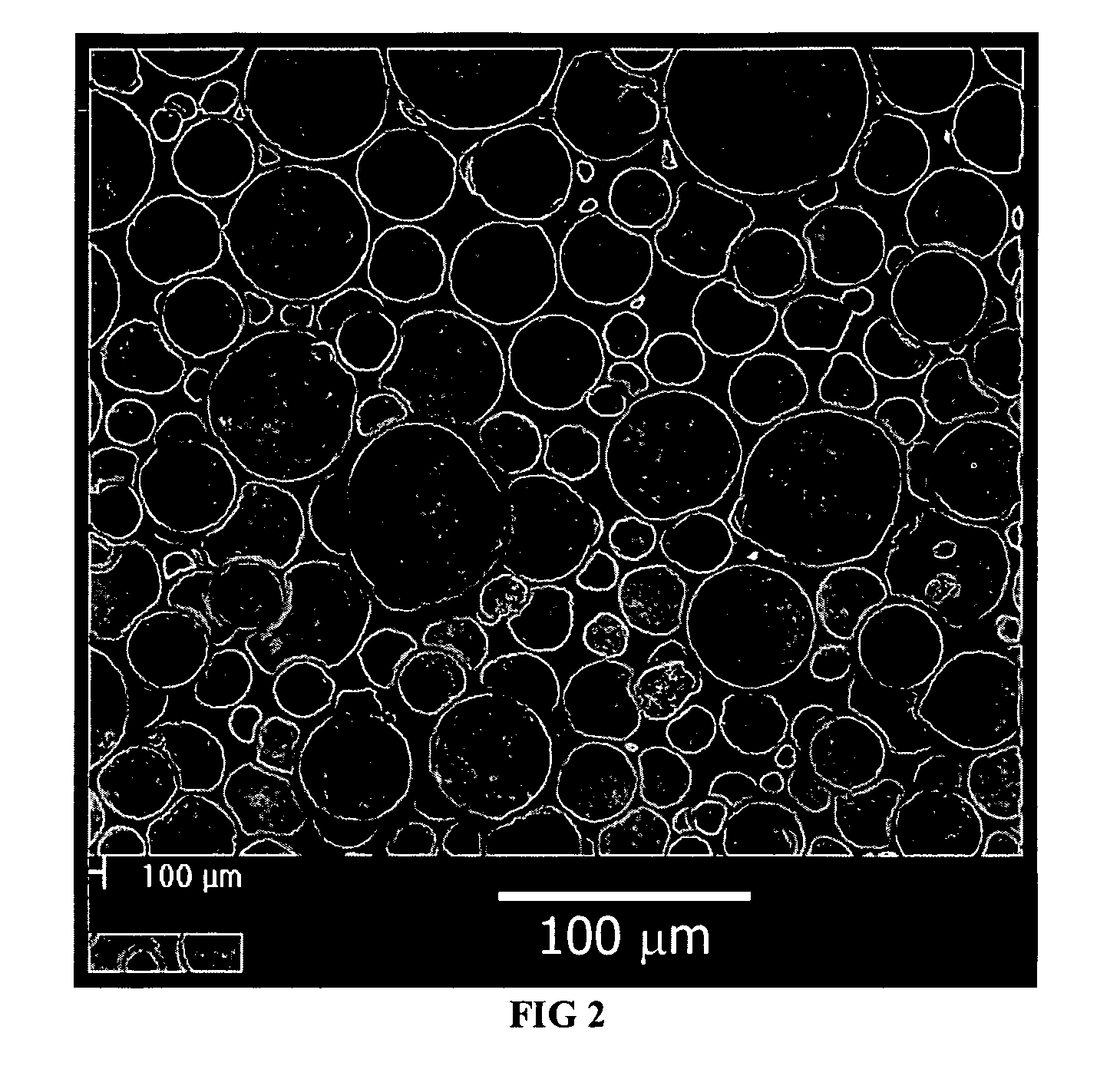Supported ceramic membranes and electrochemical cells including the same
a technology of electrochemical cells and ceramic materials, applied in the field of supported thin film membranes of ceramic materials and electrochemical cells, can solve the problems of oxide powders causing a significant amount of fine scale porosity, and catalyst materials may be chemically or mechanically incompatible, so as to improve the chemical or electrical transport to the membrane
- Summary
- Abstract
- Description
- Claims
- Application Information
AI Technical Summary
Benefits of technology
Problems solved by technology
Method used
Image
Examples
example 1
Oxide Powder Precursor of Support Layer
[0033] A partially stabilized zirconia (PSZ, Tosoh—TZ-3Y, initial SSA=14.7 m2 / g) powder was calcined in 600 g batches at 1000° C. for 8 hours to modify the surface area and ruggedness of the aggregate structure. The calcined powder retained the morphology of the precursor powder, consisting of highly uniform spheres with an average diameter of 20-100 μm. The surface area (SSA) of the powder was measured to be 11.64 m2 / g. The PSZ powder was sieved through a 100 mesh screen and then used to prepare tape casting slurries for the support layers. FIG. 2 shows an SEM of the as-calcined PSZ powder.
example 2
Bi-Layer Membrane, 40 vol. % Fugitive
[0034] The support tapes of PSZ were prepared using the PSZ powder of Example 1. The tape casting slurry was prepared in 500 ml Nalgene bottles. A bottle was filled with 300 g media (5 mm diameter, zirconia), 60.99 g solvent (Ferro, BD75-710), 0.86 g dispersant (Ferro, M1201), 19.05 g rice starch (Sigma), and 119.24 g PSZ powder. The bottle was sealed and shaken to mix the ingredients, then placed on a ball mill for 4 hours. After 4 hours of milling, the bottle was removed and 1.10 g di(propylene glycol) dibenzoate (Aldrich) and 49.86 g binder (Ferro, B7400) were added. The bottle was resealed and replaced on a slower ball mill for 12 hours. The milled slurry was decanted into a 250 ml Nalgene bottle and placed on a slow mill for one hour. The slurry was cast onto silicon-coated Mylar. The thickness of the dry tape was 150 μm. The tape was cut into 15×15 cm sheets. The sheets were stacked on top each other, five sheets per stack, and set aside. ...
example 3
Bi-Layer Membrane, 60 vol. % Fugitive
[0038] The support tapes of PSZ were prepared using the PSZ powder of Example 1. The tape casting slurry was prepared in 250 ml Nalgene bottles. A bottle was filled with 100 g media (5 mm diameter, zirconia), 27.75 g solvent (Ferro, BD75-710), 0.39 g dispersant (Ferro, M1201), 13.00 g rice starch (Sigma), and 36.17 g PSZ powder. The bottle was sealed and shaken to mix the ingredients, then placed on a ball mill for 4 hours. After 4 hour of milling, the bottle was removed and 0.50 g di(propylene glycol) dibenzoate (Aldrich) and 22.69 g binder (Ferro, B7400) were added. The bottle was resealed and replaced on a slower mill for 12 hours. The milled slurry was decanted into a 125 ml Nalgene bottle and placed on a slow mill for one hour. The slurry was cast onto silicon-coated Mylar. The thickness of the dry tape was 150 μm. The tape was cut into 7×7 cm sheets. The sheets were stacked on top each other, five sheets per stack, and set aside.
[0039] Th...
PUM
| Property | Measurement | Unit |
|---|---|---|
| temperatures | aaaaa | aaaaa |
| particle size | aaaaa | aaaaa |
| temperatures | aaaaa | aaaaa |
Abstract
Description
Claims
Application Information
 Login to View More
Login to View More - R&D
- Intellectual Property
- Life Sciences
- Materials
- Tech Scout
- Unparalleled Data Quality
- Higher Quality Content
- 60% Fewer Hallucinations
Browse by: Latest US Patents, China's latest patents, Technical Efficacy Thesaurus, Application Domain, Technology Topic, Popular Technical Reports.
© 2025 PatSnap. All rights reserved.Legal|Privacy policy|Modern Slavery Act Transparency Statement|Sitemap|About US| Contact US: help@patsnap.com



